The Design and Implementation of the ECOVIR Project: A Primary Health Care Surveillance System to Strengthen Co-Detection of Respiratory Viruses in Normandy
Abstract
1. Introduction
2. Methods and Design
2.1. Study Design
2.1.1. Project Team and Infrastructure
2.1.2. Study Design
2.2. Measures and Data Collection
2.2.1. Measure Collection
2.2.2. Outcome Measure
2.3. Intervention
2.3.1. GPI Training for Nasopharyngeal Swab Collection
2.3.2. Measures Implemented to Ensure the Feasibility of the Study
2.3.3. Assessment at the End of the First Season
2.4. Ethics
3. Results
3.1. GPIs
3.2. Patients Included
3.3. Virologic Analysis
3.4. Phone Call on Day 7
3.5. Intercurrent Events
4. Discussion
5. Conclusions
Author Contributions
Funding
Institutional Review Board Statement
Informed Consent Statement
Data Availability Statement
Acknowledgments
Conflicts of Interest
Ethics Approval
Study Status
Abbreviations
| ARI | acute respiratory infections |
| COPD | chronic obstructive pulmonary disease |
| ECOVIR | Etude des CO-détections VIrales dans les prélèvements Respiratoires—Study of viral co-detections in respiratory samples) |
| DUMG | Départements Universitaires de Médecine Générale, General Medicine University Departments) |
| DREES | Direction de la Recherche, des Etudes, de l’Evaluation et des Statistiques, Direction of Research, Studies, Evaluation and Statistics |
| GP | general practitioner |
| GPI | general practitioner investigator |
| GRAM | Groupe de Recherche sur l’Adaptation Microbienne, Microbial Adaptation Research Group |
| GROG | Groupes Régionaux d’Observation de la Grippe, Flu Regional Observation Groups |
| OMG | Observatoire de Médecine Générale, General Medicine Observatory |
| PCR | polymerase chain reaction |
References
- Moriyama, M.; Hugentobler, W.J.; Iwasaki, A. Seasonality of Respiratory Viral Infections. Annu. Rev. Virol. 2020, 7, 83–101. [Google Scholar] [CrossRef] [PubMed]
- Monto, A.S.; Malosh, R.E.; Petrie, J.G.; Thompson, M.G.; Ohmit, S.E. Frequency of Acute Respiratory Illnesses and Circulation of Respiratory Viruses in Households With Children Over 3 Surveillance Seasons. J. Infect. Dis. 2014, 210, 1792–1799. [Google Scholar] [CrossRef] [PubMed]
- GBD 2016 Lower Respiratory Infections Collaborators. Estimates of the global, regional, and national morbidity, mortality, and aetiologies of lower respiratory infections in 195 countries, 1990–2016: A systematic analysis for the Global Burden of Disease Study 2016. Lancet Infect. Dis. 2018, 18, 1191–1210. [Google Scholar] [CrossRef] [PubMed]
- Delmas, M.-C.; Guignon, N.; Leynaert, B.; Moisy, M.; Marguet, C.; Fuhrman, C. Augmentation de la prévalence de l’asthme chez le jeune enfant en France. Rev. Des Mal. Respir. 2017, 34, 525–534. [Google Scholar] [CrossRef] [PubMed]
- De Blic, J.; Brouard, J.; Vabret, A.; Deschildre, A. Interactions micro-organismes et voies aériennes distales: Spécificités pédiatriques. Rev. Des Mal. Respir. 2017, 34, 134–146. [Google Scholar] [CrossRef] [PubMed]
- Chan, J.Y.C.; Stern, D.A.; Guerra, S.; Wright, A.L.; Morgan, W.J.; Martinez, F.D. Pneumonia in Childhood and Impaired Lung Function in Adults: A Longitudinal Study. Pediatrics 2015, 135, 607–616. [Google Scholar] [CrossRef] [PubMed]
- Backman, K.; Piippo-Savolainen, E.; Ollikainen, H.; Koskela, H.; Korppi, M. Irreversible airway obstruction in adulthood after bronchiolitis in infancy: Evidence from a 30-year follow-up study. Respir. Med. 2014, 108, 218–223. [Google Scholar] [CrossRef] [PubMed]
- Jain, S.; Williams, D.J.; Arnold, S.R.; Ampofo, K.; Bramley, A.M.; Reed, C.; Stockmann, C.; Anderson, E.J.; Grijalva, C.G.; Self, W.H.; et al. Community-acquired pneumonia requiring hospitalization among U.S. children. N. Engl. J. Med. 2015, 372, 835–845. [Google Scholar] [CrossRef] [PubMed]
- Jain, S.; Self, W.H.; Wunderink, R.G.; Fakhran, S.; Balk, R.; Bramley, A.M.; Reed, C.; Grijalva, C.G.; Anderson, E.J.; Courtney, D.M.; et al. Community-Acquired Pneumonia Requiring Hospitalization among U.S. Adults. N. Engl. J. Med. 2015, 373, 415–427. [Google Scholar] [CrossRef] [PubMed]
- Hartert, T.V.; Carroll, K.; Gebretsadik, T.; Woodward, K.; Minton, P.; Vanderbilt Center for Asthma and Environmental Health Research Investigators and Collaborators. The Tennessee Children’s Respiratory Initiative: Objectives, design and recruitment results of a prospective cohort study investigating infant viral respiratory illness and the development of asthma and allergic diseases. Respirology 2010, 15, 691–699. [Google Scholar] [CrossRef] [PubMed]
- Ieven, M.; Coenen, S.; Loens, K.; Lammens, C.; Coenjaerts, F.; Vanderstraeten, A.; Henriques-Normark, B.; Crook, D.; Huygen, K.; Butler, C.C.; et al. Aetiology of lower respiratory tract infection in adults in primary care: A prospective study in 11 European countries. Clin. Microbiol. Infect. 2018, 24, 1158–1163. [Google Scholar] [CrossRef] [PubMed]
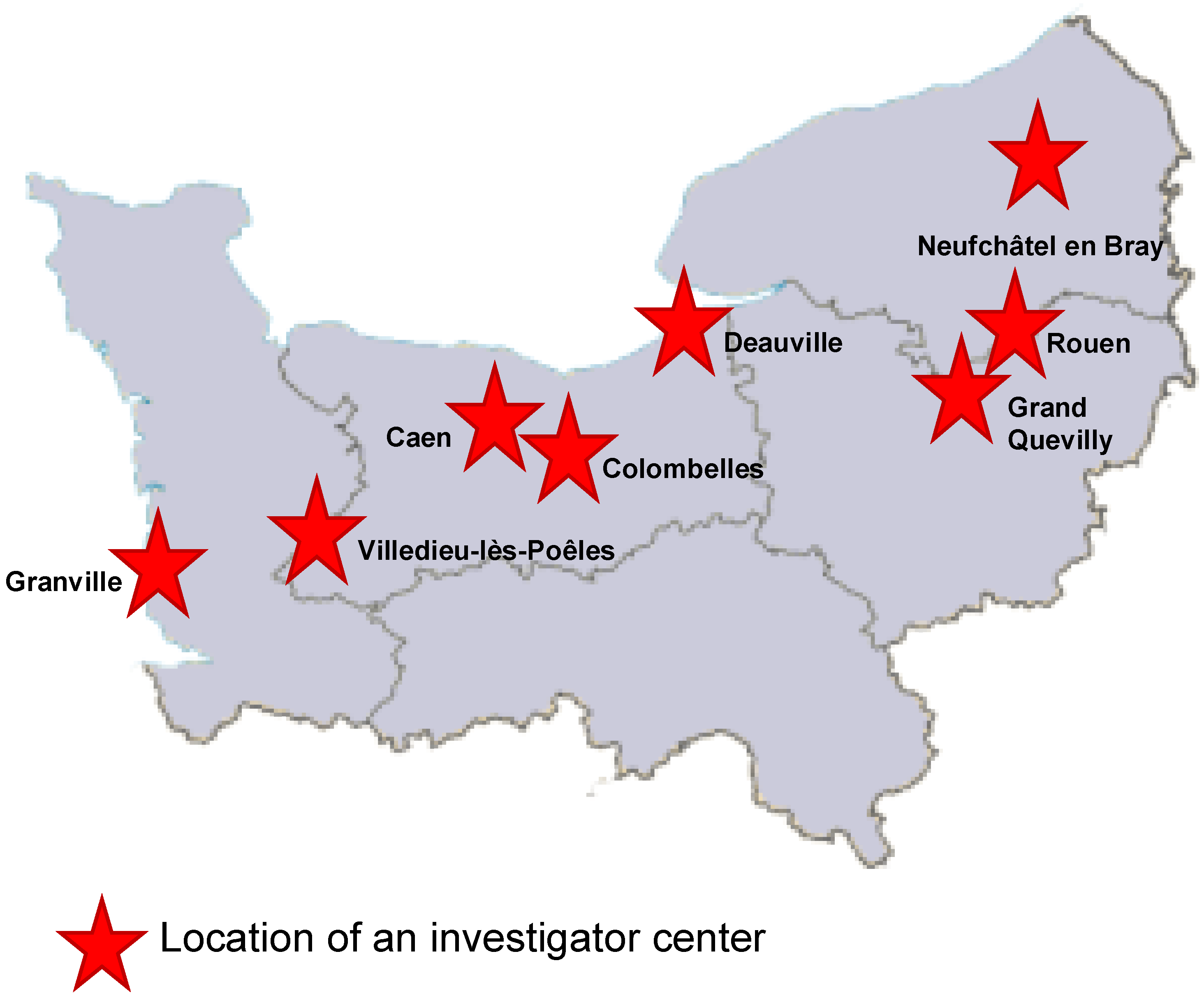
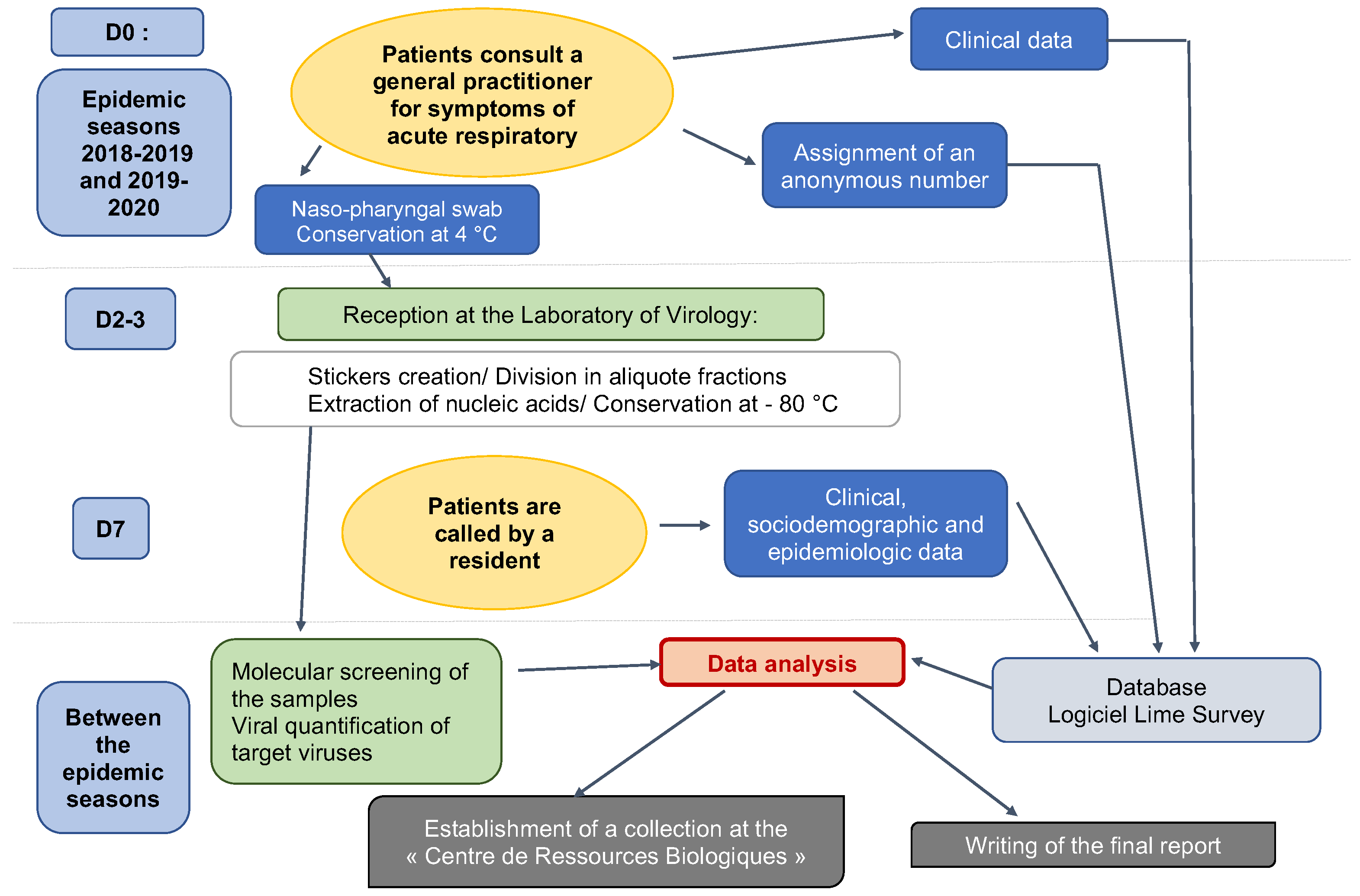
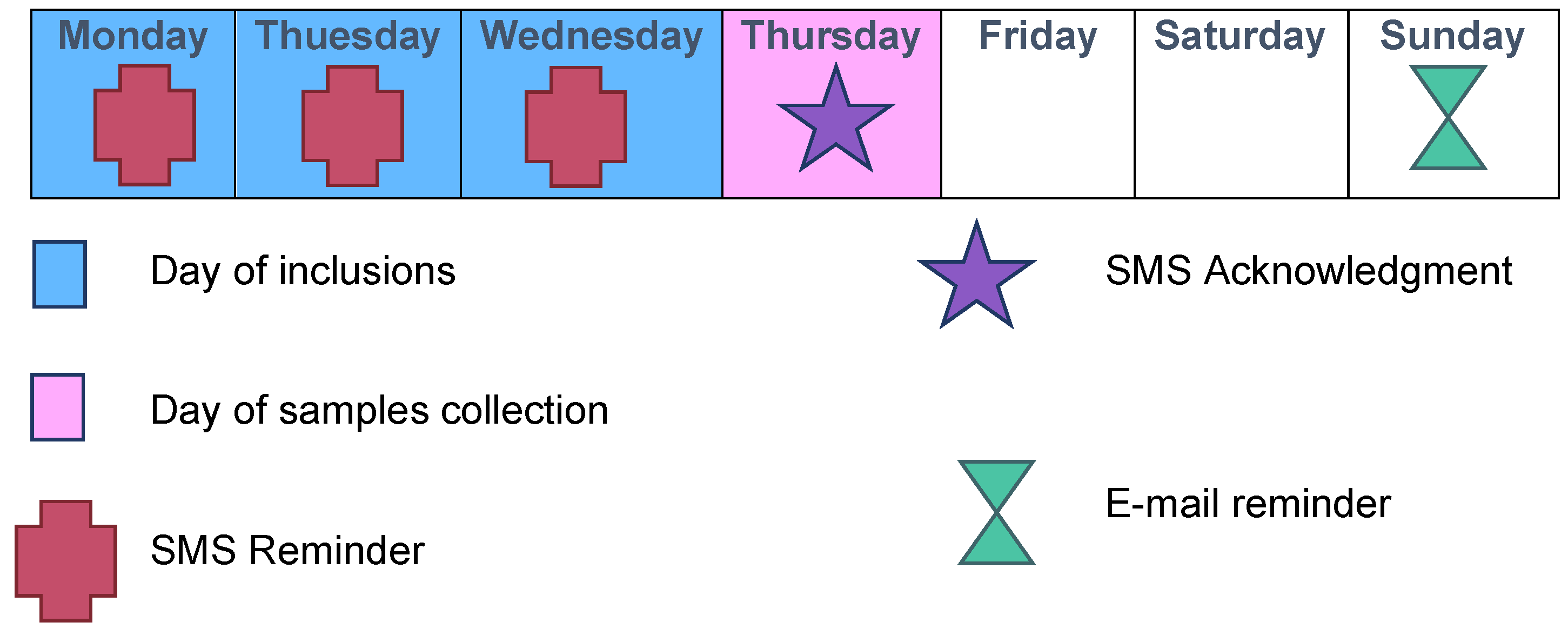
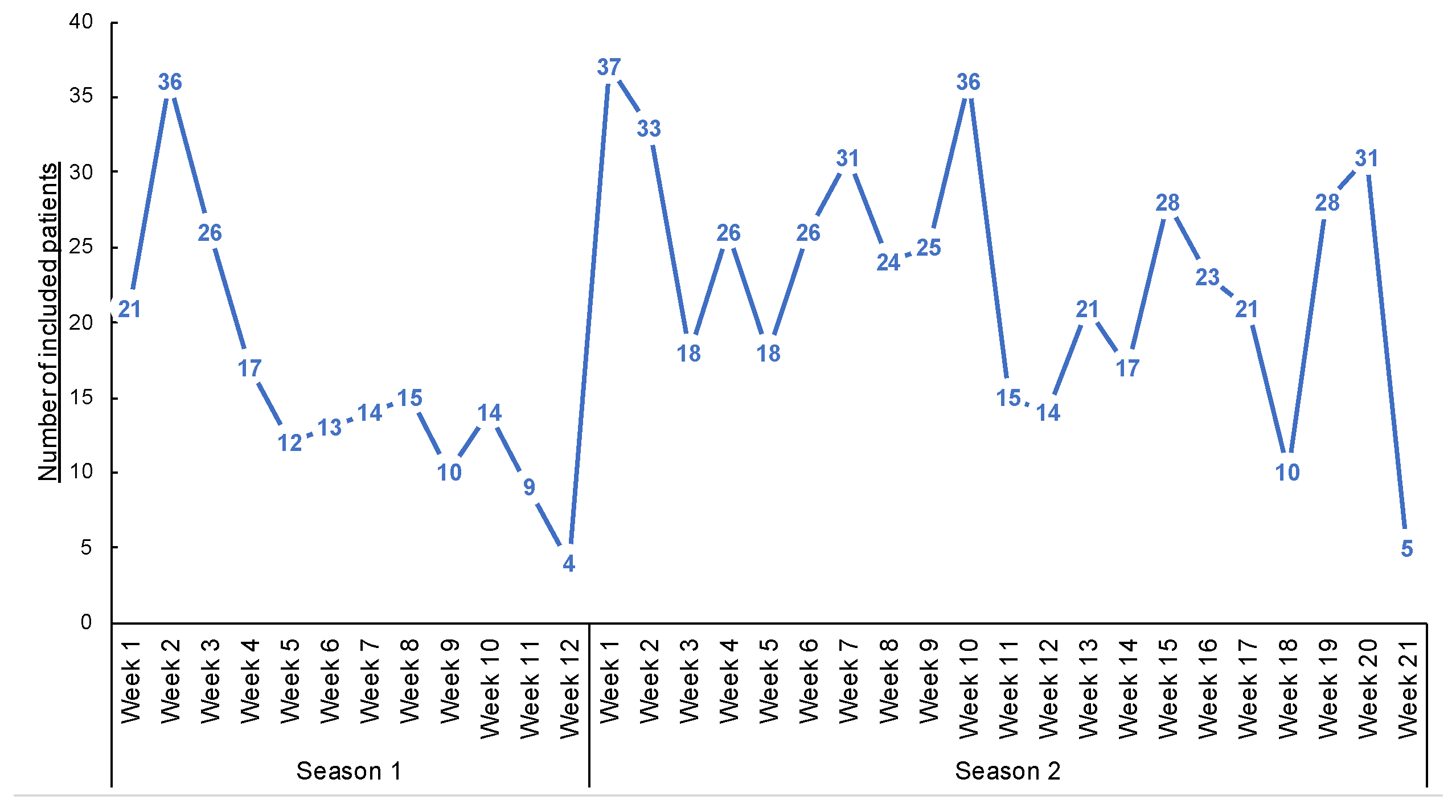
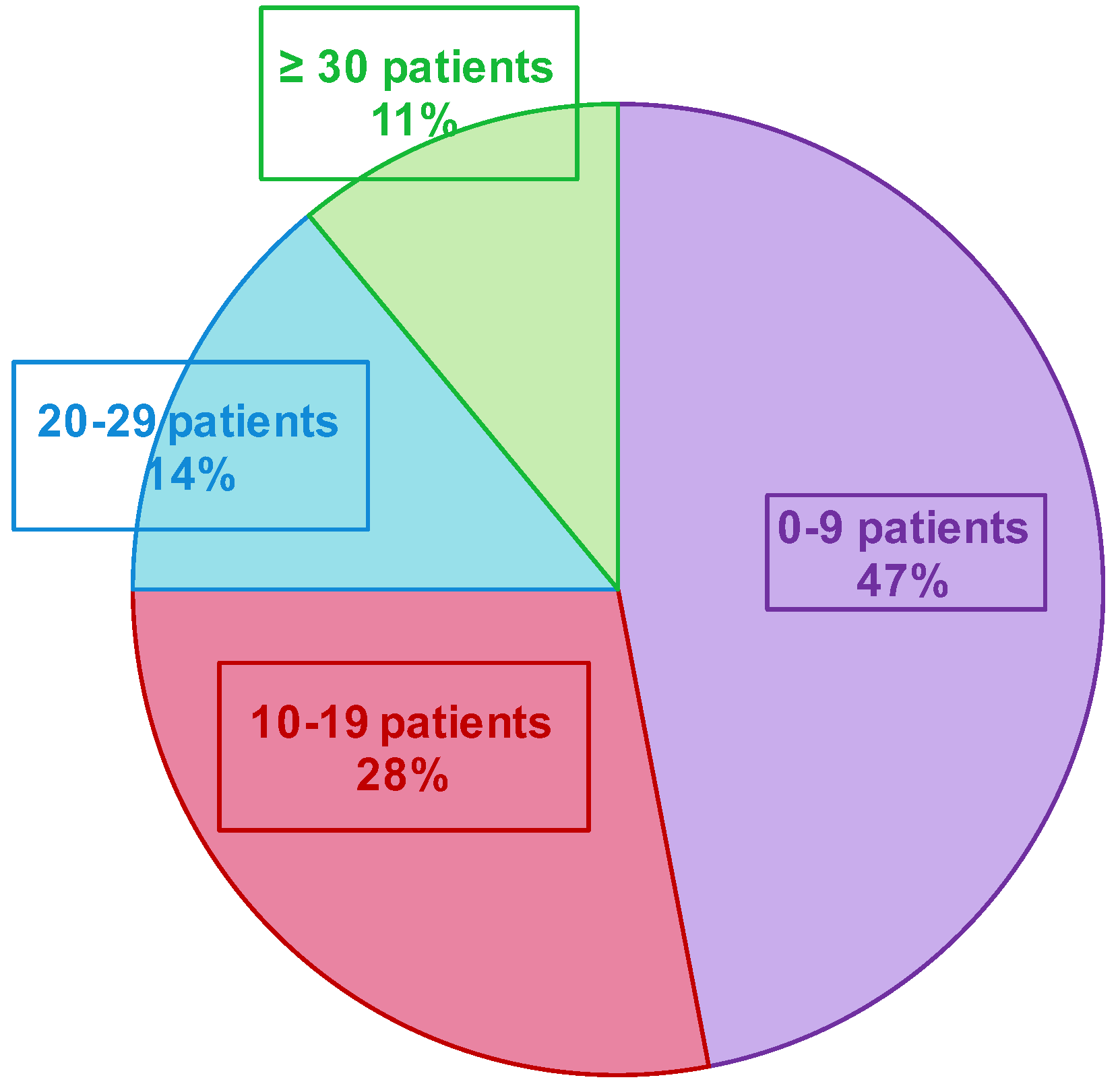
| n (%) | ||
|---|---|---|
| Age groups | 0–24 months 2–5 years 6–17 years 18–64 years 65–74 years >75 years | 76 (11) 58 (8) 72 (11) 388 (57) 61 (9) 30 (4) |
| Female sex | 405 (59) | |
| Patients lost to follow-up | 53 (8) | |
| Analyzed samples | 672 (98) | |
| Samples positives in Multiplex PCR test | 447 (67) | |
Publisher’s Note: MDPI stays neutral with regard to jurisdictional claims in published maps and institutional affiliations. |
© 2022 by the authors. Licensee MDPI, Basel, Switzerland. This article is an open access article distributed under the terms and conditions of the Creative Commons Attribution (CC BY) license (https://creativecommons.org/licenses/by/4.0/).
Share and Cite
Petat, H.; Schuers, M.; Corbet, S.; Humbert, X.; Le Bas, F.; Marguet, C.; Pellerin, L.; Rabiaza, A.; Vabret, A.; Ar Gouilh, M. The Design and Implementation of the ECOVIR Project: A Primary Health Care Surveillance System to Strengthen Co-Detection of Respiratory Viruses in Normandy. Methods Protoc. 2022, 5, 98. https://doi.org/10.3390/mps5060098
Petat H, Schuers M, Corbet S, Humbert X, Le Bas F, Marguet C, Pellerin L, Rabiaza A, Vabret A, Ar Gouilh M. The Design and Implementation of the ECOVIR Project: A Primary Health Care Surveillance System to Strengthen Co-Detection of Respiratory Viruses in Normandy. Methods and Protocols. 2022; 5(6):98. https://doi.org/10.3390/mps5060098
Chicago/Turabian StylePetat, Hortense, Matthieu Schuers, Sandrine Corbet, Xavier Humbert, François Le Bas, Christophe Marguet, Lucille Pellerin, Andry Rabiaza, Astrid Vabret, and Meriadeg Ar Gouilh. 2022. "The Design and Implementation of the ECOVIR Project: A Primary Health Care Surveillance System to Strengthen Co-Detection of Respiratory Viruses in Normandy" Methods and Protocols 5, no. 6: 98. https://doi.org/10.3390/mps5060098
APA StylePetat, H., Schuers, M., Corbet, S., Humbert, X., Le Bas, F., Marguet, C., Pellerin, L., Rabiaza, A., Vabret, A., & Ar Gouilh, M. (2022). The Design and Implementation of the ECOVIR Project: A Primary Health Care Surveillance System to Strengthen Co-Detection of Respiratory Viruses in Normandy. Methods and Protocols, 5(6), 98. https://doi.org/10.3390/mps5060098






